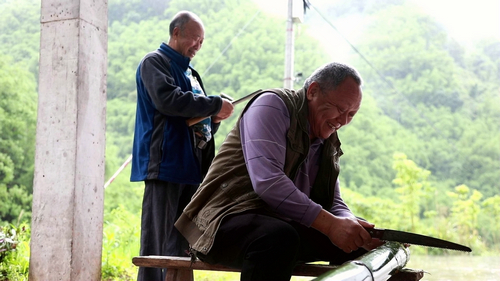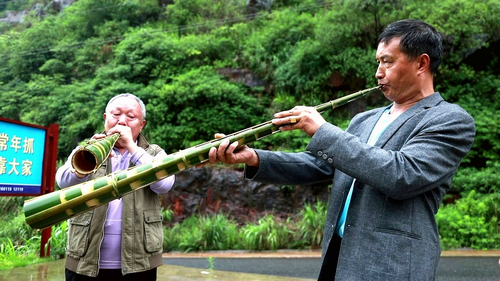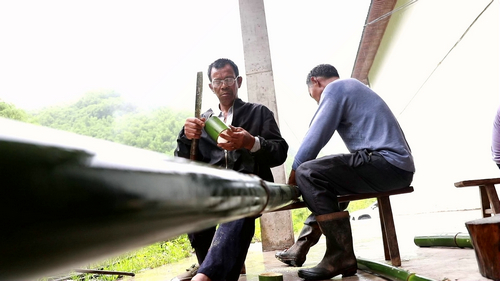Hejiang rims: the intangible cultural heritage number resounding through the mountains
In Chewang Town, Hejiang County, there is a craftsman Yang Songlin. He used a bamboo to make a folk musical instrument called Huahao. This musical instrument has a unique tone and a strong sound quality.

In the dam of the village committee of Jinlong Village, Yang Songlin was playing a homemade musical instrument with his old friend. He puffed out his cheeks and made a distant sound, floating in the valley, which was mesmerizing. The musical instrument in Yang Songlin's hands is the flower horn, which was included in the first batch of intangible cultural heritage in Hejiang County in 2007, and Yang Songlin has also become the intangible inheritor of the flower horn. There is nothing to do on rainy days, Yang Songlin plans to make flower numbers with a few old buddies.
Yang Songlin said: "If I do it alone, I can make one in about an hour and a half. Today, everyone is here to help me, and I can complete one in half an hour."

In the production of the flower number, the bamboo with tall and straight bamboo body, thick bamboo and good elasticity should be selected. From the bamboo head, a bamboo tube about 10 cm long is cut off, one end is evenly thinned, and the other end is inserted into a pagoda shape. Use three bamboo pieces and bamboo strips to fasten and fix. After the flower pattern is made, soak it in water to keep it moist to avoid drying, shrinkage, air leakage, and scattering.
Yang Songlin said: "When we were young, we took a sickle and a basket and chopped a piece of bamboo to make a flower trumpet. A few children would blow it faster and longer than whoever did it."
Talking about the interesting things from childhood, 68-year-old Yang Songlin still remembers it fresh. Chewang Town is rich in miscellaneous bamboo, which provides rich raw materials for the production of bamboo products, especially flower numbers. Yang Songlin’s family has always been in the business of bamboo products. So he has a soft spot for bamboo. He began to learn to make and play the flower horn when he was 7 or 8 years old. In his opinion, the flower horn is not only a way to entertain himself, but also an unforgettable feeling.

With the development of society, the "flower horn" has gradually disappeared from the public's field of vision, but this musical instrument is still invisible in some villages. If you walk into these villages one day and hear the sound of "flower horn", you might as well stop and listen, listen to the happiness in this voice, and listen to the lingering nostalgia.
Kang Qisi, a staff member of the Intangible Cultural Heritage Office of the Hejiang County Culture, Broadcasting and Tourism Bureau, said: "The sound of the flower horn is bright and penetrating, but because there is only one single note, there is no scale, and the melody cannot be played, so it has a certain inheritance. We call on children and young people to make traditional musical instruments by themselves and experience the way of life of the older generation to entertain themselves.”
 渝公网安备 50010702504639号
渝公网安备 50010702504639号